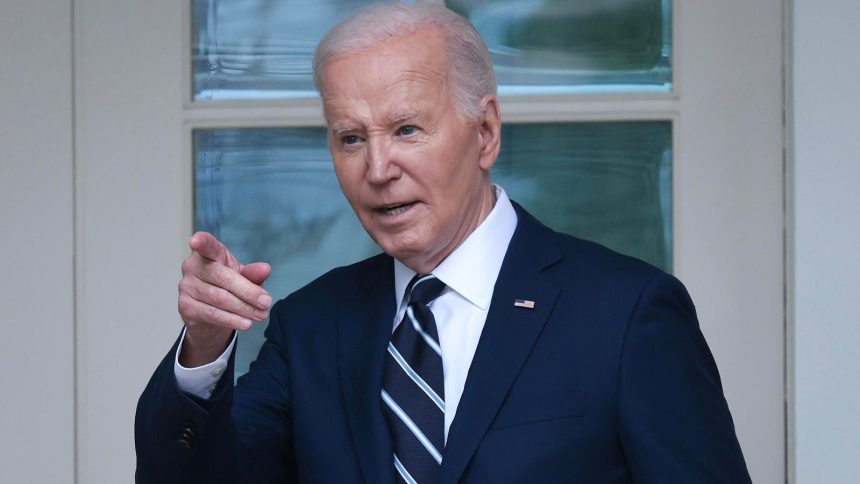The Education Department announced last week that borrowers will have more time to take advantage of a key Biden student loan forgiveness initiative.
The program, called the IDR Account Adjustment, can accelerate progress toward loan forgiveness under income-driven repayment plans by counting past loan periods that previously would have been ineligible. For some borrowers, this can result in immediate student loan forgiveness — and nearly a million borrowers have gotten their loans discharged, according to the latest data. For others, the program can shorten the time remaining on a borrower’s 2o- or 25-year loan forgiveness term under IDR plans.
The adjustment can also benefit borrowers pursuing Public Service Loan Forgiveness. PSLF can result in a discharge in as little as 10 years for borrowers who pursue careers in the nonprofit or public sectors. More than 800,000 borrowers have now received loan forgiveness through PSLF, in part due to the benefits of the account adjustment. Parent PLUS borrowers can receive benefits under the account adjustment, as well.
While some borrowers will benefit from the program automatically, others must take specific action. With the latest deadline extension announced last week, there’s now more time to do so. Here’s a breakdown of what this means for borrowers.
More Time For FFEL Borrowers To Benefit From Student Loan Forgiveness Initiative
The benefits of the IDR Account Adjustment only apply to federal student loans held or administered by the government. This includes all Direct federal student loans, as well as some FFEL-program loans that may have been privately-issued but have since been assigned or transferred to the Education Department.
But commercially-held FFEL loans, school-held Perkins loans, and other federal student loans not administered by the department (such as HEAL loans) can only qualify for the IDR Account Adjustment if they are consolidated into a Direct loan. The deadline for borrowers to consolidate had been April 30. But the Biden administration’s latest extension pushes this deadline out to June 30 — giving FFEL and Perkins loan borrowers roughly eight more weeks to apply for a Direct consolidation loan.
More Time To Maximize Student Loan Forgiveness Credit For IDR Plans
But it’s not just FFEL and Perkins loan borrowers who may want to consolidate through the Direct loan program. Some Direct loan borrowers may want to, as well. That’s because the IDR Account Adjustment has some additional consolidation benefits.
Under the previous IDR rules, only time spent in an IDR plan would count toward the 20- or 25-year student loan forgiveness term. And borrowers who already accrued IDR credit would erase that progress if they were to consolidate those loans. But under the IDR Account Adjustment, borrowers can receive IDR credit for nearly any past period of repayment under any type of plan, as well as for certain deferment and forbearance periods. And borrowers who consolidate loans with different repayment histories can actually maximize existing IDR credit for the new Direct consolidation loan, if they apply to consolidate by the extended June 30 deadline.
Under the IDR Account Adjustment, “Assuming your repayment history overlaps for each loan, the consolidation loan will be credited with the longest amount of time in repayment of the loans that were consolidated,” says Education Department guidance. “For example, say you had 50 months of time in repayment on one Subsidized Stafford Loan and 100 months of time in repayment on another Subsidized Stafford Loan. If you consolidated those loans, you would receive credit for 100 months of payments on the new Direct Consolidation Loan.”
The consolidation deadline extension to June 30 gives borrowers more time to take advantage of this opportunity. Starting on July 1, borrowers who consolidate loans with existing IDR credit and enroll in the new SAVE plan will receive the weighted average of the IDR credit on the underlying loans — not the highest amount of IDR credit based on the loan that has the longest repayment history.
More Time To Maximize PSLF Benefits Under Account Adjustment
Just like for IDR student loan forgiveness, the account adjustment also allows borrowers to maximize PSLF credit if they consolidate their loans by the new June 30 deadline. The Education Department would credit the new Direct consolidation loan with the highest amount of PSLF credit based on the underlying loan with the highest qualifying payment count.
“If you apply for consolidation by June 30, 2024, the adjustment will count periods of repayment on your loans prior to the consolidation toward IDR forgiveness and (for eligible borrowers) PSLF,” says the department’s guidance. “This differs from the earlier approach, in which consolidating your Direct Loans would reset your payment count to zero.” PSLF payment counts will temporarily be reset to zero upon consolidation, according to the department, but will subsequently get updated again to reflect the benefits of the IDR Account Adjustment, as long as the borrower applied to consolidate by June 30.
Starting on July 1, Direct consolidation loans that repay federal student loans with existing PSLF credit would receive the weighted average of that PSLF credit, not the highest amount based on the loan with the most qualifying payments.
Borrowers who are pursuing PSLF must take the additional step of certifying their employment by using the online PSLF Help Tool. PSLF processing is currently suspended, but borrowers can still submit employment certifications during the temporary pause. The Education Department will resume PSLF processing this July.
More Time For Parent PLUS Borrowers To Pursue Student Loan Forgiveness
Importantly, Parent PLUS borrowers can also benefit from the IDR Account Adjustment. And the Biden administration’s deadline extension gives parent borrowers more time to take action.
Parent PLUS loans are generally ineligible for IDR plans. However, if they are consolidated into a Direct consolidation loan, they can qualify for the Income Contingent Repayment, or ICR, plan. ICR tends to be more expensive than other IDR options, but can be a lifeline for low-income parent borrowers.
Under the IDR Account Adjustment, time spent in repayment on Parent PLUS loans (as well as some deferment and forbearance periods) can count toward the 25-year IDR loan forgiveness term, and toward PSLF for qualifying borrowers. Many Parent PLUS borrowers would need to consolidate their loans through the Direct loan program to continue repaying their loans under an IDR plan, given that unconsolidated Parent PLUS loans are ineligible for IDR. However, parent borrowers should be careful about consolidating Parent PLUS loans with non-Parent PLUS loans, as that could restrict the new Direct consolidation loan to ICR only.
Student Loan Forgiveness Implementation Pushed To September
The consolidation deadline isn’t the only IDR Account Adjustment date that the Biden administration has moved. The anticipated implementation date has also been pushed out from July to September.
“The payment count adjustment is now anticipated to be fully implemented in September 2024” rather than July, said the Education Department in a statement earlier this week. By that time, borrowers should be able to view their IDR progress (and determine how much time they have remaining before qualifying for student loan forgiveness) through a new dashboard on StudentAid.gov.
Read the full article here
















